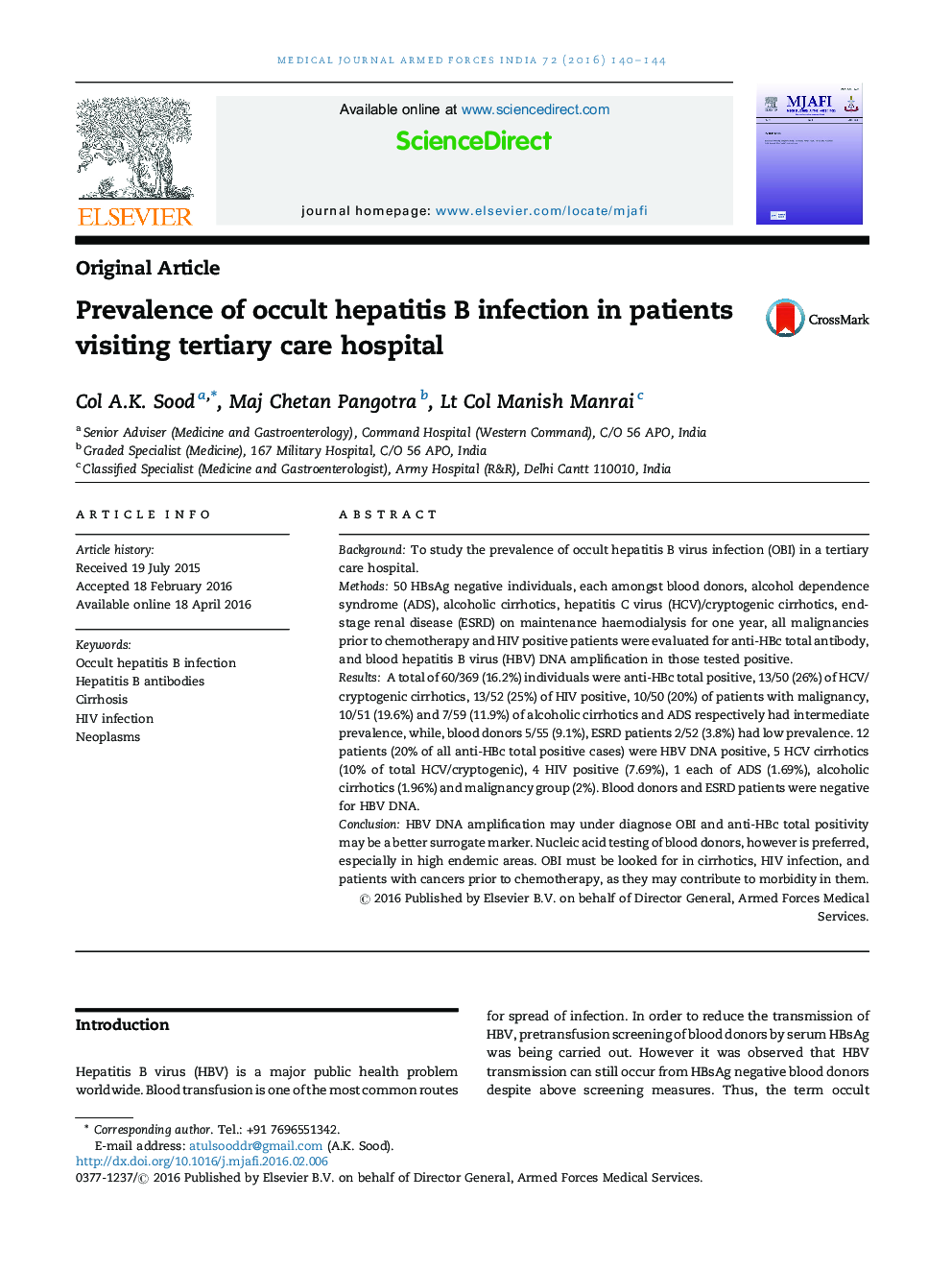| Article ID | Journal | Published Year | Pages | File Type |
|---|---|---|---|---|
| 3160911 | Medical Journal Armed Forces India | 2016 | 5 Pages |
BackgroundTo study the prevalence of occult hepatitis B virus infection (OBI) in a tertiary care hospital.Methods50 HBsAg negative individuals, each amongst blood donors, alcohol dependence syndrome (ADS), alcoholic cirrhotics, hepatitis C virus (HCV)/cryptogenic cirrhotics, end-stage renal disease (ESRD) on maintenance haemodialysis for one year, all malignancies prior to chemotherapy and HIV positive patients were evaluated for anti-HBc total antibody, and blood hepatitis B virus (HBV) DNA amplification in those tested positive.ResultsA total of 60/369 (16.2%) individuals were anti-HBc total positive, 13/50 (26%) of HCV/cryptogenic cirrhotics, 13/52 (25%) of HIV positive, 10/50 (20%) of patients with malignancy, 10/51 (19.6%) and 7/59 (11.9%) of alcoholic cirrhotics and ADS respectively had intermediate prevalence, while, blood donors 5/55 (9.1%), ESRD patients 2/52 (3.8%) had low prevalence. 12 patients (20% of all anti-HBc total positive cases) were HBV DNA positive, 5 HCV cirrhotics (10% of total HCV/cryptogenic), 4 HIV positive (7.69%), 1 each of ADS (1.69%), alcoholic cirrhotics (1.96%) and malignancy group (2%). Blood donors and ESRD patients were negative for HBV DNA.ConclusionHBV DNA amplification may under diagnose OBI and anti-HBc total positivity may be a better surrogate marker. Nucleic acid testing of blood donors, however is preferred, especially in high endemic areas. OBI must be looked for in cirrhotics, HIV infection, and patients with cancers prior to chemotherapy, as they may contribute to morbidity in them.
